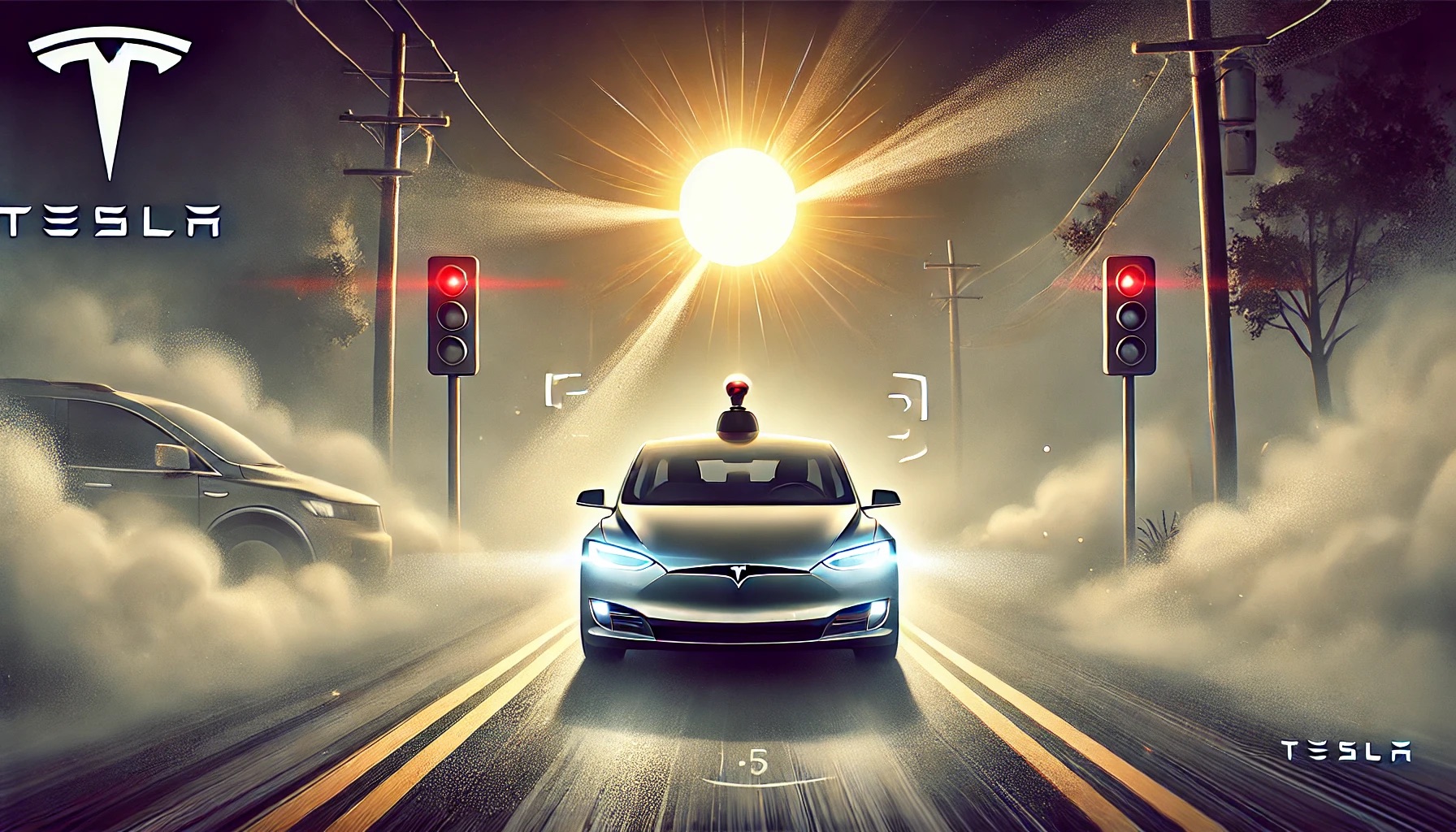The National Highway Traffic Safety Administration has launched a new investigation into Tesla’s Full Self-Driving (FSD) system after multiple crashes were reported in reduced visibility conditions such as fog, sun glare, and airborne dust, including at least one fatal accident.
Tesla’s Vision-Only Approach Under Scrutiny
Regarding its vision-only strategy for autonomous driving, Tesla has maintained to face substantial skepticism.
Now, the NHTSA has begun a new inquiry into the purportedly impaired capability of Tesla's custom autonomy solution to traverse low-visibility situations, just as the electric vehicle behemoth is preparing to release an unsupervised FSD as early as next year.
NHTSA Investigates Low-Visibility Crashes
Specifically, the National Highway Traffic Safety Administration (NHTSA) has initiated an initial inquiry into multiple traffic accidents that happened in low-visibility situations when Tesla's FSD was turned on. Tragically, one of the four accidents under scrutiny resulted in death. Notated by the agency:
"In these crashes, the reduced roadway visibility arose from conditions such as sun glare, fog, or airborne dust."
Delays Could Impact Tesla's 2026 Cybercab Launch
Although this inquiry is still in its early stages, a negative outcome might significantly delay Tesla's plans to release its FSD with unsupervised capability next year, which would mean a postponement of the fully autonomous Cybercab debut in 2026.
As reported by WCCFTECH, it should be noted that Elon Musk had previously stated during the October 10th Cybercab reveal event that the "fully autonomous" unsupervised FSD for Models S, 3, X, and Y will begin to be distributed in 2019 in the states of Texas and California, and that the Cybercab will formally debut "before 2027."
FSD Still Lags Behind Waymo’s Disengagement Rates
Nevertheless, there are those who continue to doubt Tesla's intentions about autonomy, especially in light of the data that is currently available from the California DMV, which shows that Waymo averages a disengagement every 17,311 miles—far more than what the FSD is capable of.
LiDAR May Become a Necessity for Tesla
Although, if the NHTSA were to issue a negative verdict, Tesla might be compelled to add LiDAR sensors to its vision-only autonomous driving system.
However, with the unsupervised FSD being trained on a vision-only neural network, this conclusion will be quite costly and would significantly delay Tesla's autonomy-related objectives.



 AustralianSuper Backs BlueScope Steel’s Rejection of $9 Billion Takeover Bid
AustralianSuper Backs BlueScope Steel’s Rejection of $9 Billion Takeover Bid  xAI Cash Burn Highlights the High Cost of Competing in Generative AI
xAI Cash Burn Highlights the High Cost of Competing in Generative AI  Trump Pushes $100 Billion U.S. Oil Investment Plan for Venezuela After Maduro Seizure
Trump Pushes $100 Billion U.S. Oil Investment Plan for Venezuela After Maduro Seizure  SK Hynix Shares Hit Record High as AI Memory Demand Fuels Semiconductor Rally
SK Hynix Shares Hit Record High as AI Memory Demand Fuels Semiconductor Rally  Vitol to Ship First U.S. Naphtha Cargo to Venezuela Under New Oil Supply Deal
Vitol to Ship First U.S. Naphtha Cargo to Venezuela Under New Oil Supply Deal  NASA and SpaceX Target Crew-11 Undocking From ISS Amid Medical Concern
NASA and SpaceX Target Crew-11 Undocking From ISS Amid Medical Concern  Supreme Court to Hear Cisco Appeal on Alien Tort Statute and Human Rights Liability
Supreme Court to Hear Cisco Appeal on Alien Tort Statute and Human Rights Liability  Walmart to Join Nasdaq-100 Index as It Replaces AstraZeneca Following Exchange Move
Walmart to Join Nasdaq-100 Index as It Replaces AstraZeneca Following Exchange Move  Trump Calls for 10% Credit Card Interest Rate Cap Starting 2026
Trump Calls for 10% Credit Card Interest Rate Cap Starting 2026  Lenovo Unveils AI Cloud Gigafactory With NVIDIA and Launches New AI Platform at CES 2026
Lenovo Unveils AI Cloud Gigafactory With NVIDIA and Launches New AI Platform at CES 2026  Samsung Electronics Hits Record High as AI Momentum Fuels Investor Optimism
Samsung Electronics Hits Record High as AI Momentum Fuels Investor Optimism  China Reviews Meta’s $2 Billion AI Deal With Manus Amid Technology Control Concerns
China Reviews Meta’s $2 Billion AI Deal With Manus Amid Technology Control Concerns  EU Orders Elon Musk’s X to Preserve Grok AI Data Amid Probe Into Illegal Content
EU Orders Elon Musk’s X to Preserve Grok AI Data Amid Probe Into Illegal Content  China’s AI Sector Pushes to Close U.S. Tech Gap Amid Chipmaking Challenges
China’s AI Sector Pushes to Close U.S. Tech Gap Amid Chipmaking Challenges  Boeing 737 MAX 10 Advances in FAA Testing as Certification Delays Continue
Boeing 737 MAX 10 Advances in FAA Testing as Certification Delays Continue  Samsung Electronics Poised for Massive Q4 Profit Surge on Soaring Memory Chip Prices
Samsung Electronics Poised for Massive Q4 Profit Surge on Soaring Memory Chip Prices 































